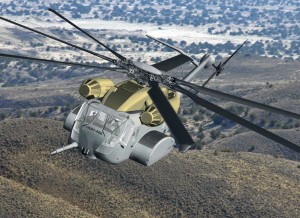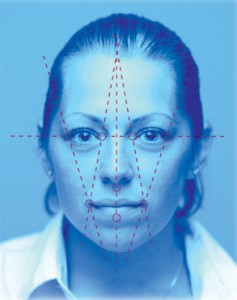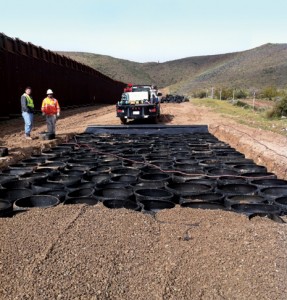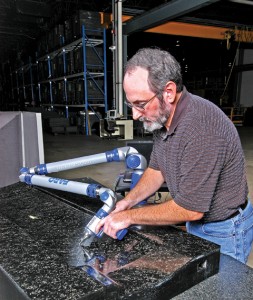By Jennifer Jett
West Virginia is a small, unassuming state, recognized around the world for its coal and natural gas and acknowledged by outdoor adventurers as one of the best locations for natural beauty and adrenaline spikes. To an outsider, these two industries pretty much sum up the State of West Virginia.
What many don’t realize is the amount of groundbreaking research and development (R&D) that takes place in our Appalachian hills—the type of work used to deter acts of terrorism and support the U.S. military’s many missions. It’s true that our work force is unmatched in pride and perseverance—if they want something, they do it; if they don’t know something, they learn it. Perhaps the FBI and the U.S. military—as well as other global R&D and technology corporations who need the intelligence and manpower to make science fiction reality—see in this small, unassuming state what its own people can see so clearly: the potential.
As the previous home of the Chemical Valley, we have existing infrastructure at our fingertips to assist in the research, development and testing of new products for all industries. The variables of our terrain provide the basis for a testing pad for vehicles and weapons used in the Middle East by our military. Low rates of electricity, thanks to our coal, as well as an abundance of water and forest that provide the supply of natural resources necessary for raw materials for manufacturing, are just added bonuses.
Businesses and organizations from across the country and around the world have seen firsthand the potential that lies in West Virginia’s R&D and technology sectors. In honor of their presence and accomplishments since coming to the Mountain State, we wanted to recognize four R&D and technology companies that are making great strides across the industries of civilians, law enforcement and military members alike.
Aurora Flight Sciences, with a production plant located in Bridgeport, WV, specializes in the development of advanced unmanned air systems and aerospace vehicles. Known as Aurora Flight Sciences of West Virginia, the manufacturing facility produces primary subassemblies that are used by the U.S. Air Force, U.S. Navy and U.S. Marine Corps.
The FBI’s Biometric Center of Excellence and Next Generation Identification are two of the FBI’s major programs to support the growth of biometric technologies, and they are both located in Clarksburg. Twenty years after its arrival in West Virginia, the division continues to explore the use of biometric modalities—like facial recognition, rapid DNA processing and handwriting—to combat crime and terrorism.
Reinforced Aggregates Company is a West Virginia business that resulted from one man’s tireless efforts to eliminate scrap tire piles as a public health problem. Sam Bonasso’s environmentally sustainable invention, Mechanical Concrete®, uses scrap tires and gravel to create nearly indestructible roads, an important asset in the mining and heavy energy industry of West Virginia.
Touchstone Research Laboratory, located in Triadelphia, WV, another West Virginia-made business, is the result of Brian Joseph’s journey to apply science and creative thinking to help companies make better products. Touchstone’s most exciting product is CFOAM®, a strong, stiff, fireproof and electrically conductive material used to hurricane- and tornado-proof buildings, fireproof walls for ships, act as an energy absorber to protect structures against explosions and provide thermal protection for rockets and rocket nozzles.
Aurora Flight Sciences
 By Kevin Balsan
By Kevin Balsan
Aurora Flight Sciences is a leader in the development and manufacturing of advanced Unmanned Air Systems (UAS) and aerospace vehicles. Headquartered in Manassas, VA, Aurora operates production plants in Bridgeport, WV, and Columbus, MS, and a research and development center in Cambridge, MA.
Aurora found a home in West Virginia beginning in September 1994. The Aurora Flight Sciences of West Virginia (AWV) manufacturing facilities are comprised of almost 100,000 square feet of shop area designed specifically for the manufacture of precision composite (non-metallic and metallic) sheet metal components and major subassemblies. From its location at the North Central West Virginia Airport, AWV provides leading technological contributions to the Mountain State and the country. The Bridgeport facility includes a 42,000-square-foot composites building designed as a showplace for lean aerospace manufacturing featuring a 10,000-square-foot clean room, autoclaves and extensive nondestructive and 3-D inspection capabilities.
“The technology Aurora brings to the aerospace industry is amazing,” says Stephanie Ross, Aurora employee and West Virginia native, “and the fact that we can make such a significant contribution from right here in North Central West Virginia is a very well-kept secret.”
AWV manufactures primary subassemblies for Northrop Grumman Corporation and Sikorsky Aircraft Company, which are used by the U.S. Air Force, U.S. Navy and U.S. Marine Corps. In addition, AWV provides fabrication on Sikorsky’s S-97 RAIDER™ next generation helicopter, as well as Aurora’s own Orion UAS.
Aurora’s Northrop Grumman work share on the Global Hawk UAS began with the program in 2005 and entails all of the aircraft’s composite components—including the aft fuselage, forward nacelle, mid nacelle, aft nacelle and V-tail assemblies—except for the wing and radomes. In 2008 Aurora also became a supplier on the Northrop Grumman RQ-4N aircraft for the U.S. Navy’s Broad Area Maritime Surveillance Unmanned Aircraft System (BAMS UAS) program.
The BAMS UAS program provides persistent maritime intelligence, surveillance and reconnaissance data collection and dissemination capabilities to the Maritime Patrol and Reconnaissance Force. Manufacturing these products encompasses the full spectrum of metal to composite materials and bonding technologies. Through engineering and tooling capabilities, AWV proves capable of meeting stringent tolerance requirements that enable products to be line-replaceable units, which is essential for the end user.
On Sikorsky’s CH-53K heavy lift helicopter, Aurora is a design partner for the main rotor pylon, where Aurora’s responsibilities include CAD modeling, engineering analysis, tooling and tear down article fabrication. This complex structure was designed and built to withstand high temperature and vibration requirements. AWV also provides production tooling and fabrication of the external engine nacelles for Sikorsky’s CH-53K.
“Aurora is a key member of the CH-53K program team,” says Al Altieri, Sikorsky’s vice president for Supply Management. “With the delivery of the first CH-53K engine nacelles, Aurora continues to demonstrate excellence in producing and delivering high-quality composite assemblies.”
Aurora’s business relationship with Sikorsky continues to grow, bringing skilled jobs to Bridgeport, WV, while providing high-quality components to our customer.
Aurora is a proud member of the Sikorsky S-97 RAIDER team that is building a next-generation light tactical helicopter for evaluation by the U.S. military. As an S-97 team member, Aurora is responsible for the structural design engineering and fabrication for the aircraft’s airframes.
“We are pleased to join Sikorsky’s team to develop the S-97 RAIDER prototype,” says John Langford, Aurora’s chairman and CEO. “Our demonstrated success in rapid prototyping and our experience in transitioning prototype programs into production were key factors in Sikorsky’s decision to select Aurora for this high-priority development program.”
As an X2 aircraft design, the S-97 RAIDER helicopter will feature coaxial counter-rotating main rotors and a pusher propeller to provide dramatic improvements in maneuverability, hover efficiency, high/ hot climate performance and speed.
In addition to flying at nearly twice the speed of a conventional helicopter, the S-97 RAIDER prototype aircraft will incorporate other key performance parameters critical to combat operations: increased maneuverability, greater endurance, reduced acoustic noise signature and the ability to operate at high altitudes.
Orion is Aurora’s long-endurance UAS capable of providing extreme persistence for military application, with the ability to fly for five days with a 1,000-pound payload at 20,000 feet in altitude. Orion was competitively selected by the U.S. Air Force for the Medium Altitude Global ISR and Communication Joint Capability Technology Demonstration. The Orion fuselage is a composite bonded assembly with provisions for an integral fuel tank and landing gear attachments. With an open-architecture payload and ground station interface, the Orion UAS will provide the U.S. Air Force with flexibility to accommodate the myriad payloads suited to the Orion’s design.
Aurora works closely with customers to ensure that all products achieve the desired performance requirements while providing a repeatable process. Reliability is crucial within the aerospace industry. Lives depend on the products manufactured in Harrison County every day. The work ethic and sense of pride common within the State of West Virginia is reflected by the personal commitment of AWV’s specialized engineers, programmers, technicians, operations personnel and managers, offering peace of mind through quality to all customers.
Photography by Sikorsky Aircraft Company
Federal Bureau of Investigation
 By David Cuthbertson
By David Cuthbertson
The Federal Bureau of Investigation (FBI) has long understood the value of using biometrics, like fingerprints and DNA, to combat crime and terrorism. As technology has advanced in recent years, the FBI has actively explored the use of additional biometric modalities, such as facial recognition, rapid DNA processing, scars, marks, tattoos, scent and handwriting. Two of the FBI’s major programs that support the growth of biometric technologies are the Next Generation Identification (NGI) program and the Biometric Center of Excellence (BCOE). Both of these are located in Clarksburg at the FBI’s Criminal Justice Information Services (CJIS) Division.
When the CJIS Division first arrived in West Virginia more than 20 years ago, one of the staff’s main tasks was converting paper fingerprint and criminal history information into an electronic format. This was the first step to achieve the FBI’s vision for the Integrated Automated Fingerprint Identification System (IAFIS). Established in 1999, the IAFIS is the nation’s largest electronic repository of fingerprint and criminal history records. Records in the system come from law enforcement agencies across the nation and around the globe, and are used by these same communities for identification, investigation and verification. The success of the IAFIS and the growing demand for its services paved the way for the FBI to implement the Next Generation Identification program to expand and update the FBI’s biometric services.
In 2007, the FBI’s Science and technology branch established the Biometric Center of Excellence to define biometric priorities and advance new and enhanced biometric capabilities for integration into FBI operations. The BCOE actively collaborates with partners in the federal government, law enforcement, academia and industry from across the globe, and draws upon the experiences of researchers and developers who are also engaged in developing standards for reliable biometric technology. This collaborative effort identifies and bridges capability gaps to expand the useful application of biometrics for fighting crime and terrorism while also ensuring privacy protections.
The BCOE’s recent successes with facial recognition services provide a comprehensive example of some of the steps that must be navigated to bring the advantages of new biometric technology to the front lines. Facial recognition is the automated searching of a facial image in a biometric database, resulting in a computer-generated group of facial images ranked by similarity. Images are matched by analyzing features of the face, such as the eyes, nose, mouth, skin texture and hair.
A few years ago, as the FBI’s facial recognition technology was being developed, the FBI expanded its training to include facial recognition, ensuring familiarity with the technology and its proper use. Last year, the Next Generation Identfication program launched a successful facial recognition pilot program, starting with a small group of agencies. Because of its success, the pilot will be replaced by the NGI’s Interstate Photo System, making facial recognition available to the nation’s entire law enforcement community in 2014. This year, the FBI began using the pilot technology to provide facial recognition services to FBI field offices nationwide. With this service, images of subjects who are the focus of active FBI investigations are compared against a database of facial images. The FBI’s policy is that resulting comparisons are not used for positive identification of an individual, but rather as investigative leads to point FBI agents and analysts toward information, evidence and connections that may help solve crimes.
Like many new technologies, facial recognition capabilities have outpaced the development of laws and policies governing their use. In response to this challenge, the BCOE sponsored the U.S. Government Facial Recognition Legal Series and continues to champion an effort with the National Science and Technology Council to develop facial recognition guidelines. These guidelines will help law enforcement agencies establish policies to ensure a consistent level of protection for the privacy of citizens. The BCOE also plans to coordinate meetings between federal government agencies using facial recognition and privacy and civil liberties groups who are concerned about possible abuses of the technology.
Facial recognition is just one of the modalities the FBI is carefully developing for widespread use. As an agency of the federal government, the FBI seeks to fully access the resources and collaborative partners who are also interested in developing tools and policies for biometric technologies in a responsible and systematic manner. The result the FBI is seeking is the same result that occurred when the CJIS Division moved to West Virginia and developed the IAFIS—reliable, timely and useful tools that can support the FBI and its partners working in the law enforcement and intelligence communities to keep our nation safe.
Photography by the Federal Bureau of Investigation
Reinforced Aggregates Company
 By John Bobo
By John Bobo
“Scrap tire piles are a public health problem. We need to eliminate them,” decreed the West Virginia Legislature in 1998. This problem was handed down to the West Virginia Division of Highways (WVDOT) and Sam Bonasso, who was then serving as the secretary of transportation.
“Why can’t we just put these tires in the base of roads?” Bonasso had asked. In 1998 the answer he received was that it’s not technically possible because tires retain water and cause soft spots in road beds.
Bonasso left the WVDOT in 2000, but the problem continued to nag him for years. So much so, in fact, that it eventually led Bonasso, a professional civil engineer, to create a new green technology for the construction industry.
More than 300 million scrap tires are generated annually in the U.S. and almost 1.4 billion globally. Bonasso knew there had to be an answer, and he was determined to find it.
The answer came to him in 2004 hidden within the tire itself. “Cutting the side walls off a tire leaves a tire-tread cylinder,” he explains. “When you fill that cylinder with crushed stone, it instantly hardens and can support at least 50,000 pounds—more than two and a half times the weight of a coal truck wheel load. It’s perfect for a road base, which is why I called it Mechanical Concrete®.”
Each stone-filled tire cylinder becomes a building block that can be combined with others. This U.S. patent-protected construction technology has been compared to the U.S. Army-developed geocell, which is used worldwide.
Bonasso started Reinforced Aggregates Company in Morgantown, WV, to develop and sell Mechanical Concrete tire-derived geo-cylinders. Today Mechanical Concrete is used for road bases, foundations and retaining walls, as well as for stabilizing building sites and controlling erosion from storm water. To date, it’s been used as the base for several public and industrial roads from California and Arizona to Ohio and West Virginia.
In 2006, the WVDOH District 4 in Bridgeport had a problem with a section of Morgan Run Road in Doddridge County, which floods three to four times per year. Searching for a solution to a true maintenance challenge, the WVDOH decided to test Mechanical Concrete. The road’s maintenance costs dropped by 75 percent, and it is still performing six years later.
Other road owners have found similar savings and great performance. Near Morgantown, the MEPCO River Dock coal haul road, which has a Mechanical Concrete base, carries 300 coal trucks every day. “It’s amazing,” says Jerry Swartz, MEPCO’s Fuels and Logistics manager. “We usually add a couple of truckloads of stone a month to our road due to surface wear and deterioration. Now it’s a couple of loads every four or five months.”
In the last two years, more than 700,000 coal trucks have traveled over Monongalia County roads with Mechanical Concrete bases. These roads have concrete, asphalt and stone surfaces. The roads are in excellent condition with just light surface wear.
Mechanical Concrete has also been used as a road base in West Virginia’s Marcellus Shale play along the Ohio River with the same positive results.
“Mechanical Concrete is environmentally sustainable, making it a natural for roads in the Marcellus play and for controlling erosion on road shoulders,” Bonasso says. “It’s truly rare to find a green product that’s also economical and rugged like Mechanical Concrete and works well on roads in the mining and heavy energy industry.”
Like most new technology, Mechanical Concrete has had its share of surprises. “We learned Mechanical Concrete is virtually pothole-proof,” he shares. Potholes form when water gets into the stone base of a normal road and causes it to become squishy like a mud pie. When a truck runs across this squishy mud pie, the mud squishes sideways, and the asphalt or concrete surface eventually falls down. Bonasso discovered that Mechanical Concrete tire cylinders confine the stone base and won’t allow it to squish sideways—even when it’s soaked with water. The result? No potholes or ruts.
Both state and federal environmental agencies are interested in promoting civil engineering uses of scrap tire-derived materials, particularly when they are buried. “The use of tire-derived geo-cylinders in Mechanical Concrete is consistent with West Virginia Department of Environmental Protection and U.S. Environmental Protection Agency regulations,” says Bonasso.
Because of its simplicity, Mechanical Concrete is also being promoted for disaster recovery and for building infrastructure in developing countries. It creates a reliable all-weather road that’s very easy to maintain by hand or with simple equipment.
“For years, the irony that I was reinventing the wheel wasn’t lost on me,” Bonasso says, “and finding the right business solution was frustrating at times. But to be able to solve real-world construction problems selling tire-derived geo-cylinders made with scrap tires today is very gratifying. I can’t wait to see the creative new ways people find to use Mechanical Concrete.”
Photography by Reinforced Aggregates Company
Touchstone Research Laboratory
 By Gerrill Griffith
By Gerrill Griffith
When a little boy named Brian Joseph began to tinker in the furnace room of his childhood home, which he referred to as his laboratory, it was the beginning of a scientific infatuation that would ultimately lead to the creation of one of West Virginia’s leading research facilities and a bold new product made from the state’s most famous natural resource: coal.
Joseph had a dream of building his own innovative research facility in his hometown of Wheeling, a dream that finally came to fruition in 1981 when, with help from his mother, he created Touchstone Research Laboratory in the basement of a 100-year-old building. The aged townhouse in a rough neighborhood was an unlikely birthplace for a high-tech research facility, but the challenge stoked Joseph’s creative fire.
Touchstone began its keystone focus of applying science and creative thinking to unravel perplexing industrial problems and help companies make better products, save established jobs and create new ones.
“Industrial problems can be paint not sticking on a car body, a break in a huge roll used by a paper company or the failure of a rocket,” Joseph explains. “Finding the answers to problems requires patience, flexibility, experience and a commitment to results.”
Joseph’s aggressive leadership led to a prestigious challenge—improving the quality and reliability of many materials used in America’s space shuttle.
Among hundreds of other industrial problem-solving jobs, Touchstone took over research operations of Shenango, a Pittsburgh-based foundry operation, and helped major American corporation 3M develop new metal matrix composite materials and fibers. The laboratory eventually acquired the research and development facilities of Wheeling-Pittsburgh Steel and installed an experimental foundry and hot and cold rolling mills to develop new aluminum alloys.
The dream had grown into an entity that was twice listed by Inc. magazine as one of the 500 fastest-growing companies in the United States. It was time for a new chapter in the book of Touchstone, though—one that meant accepting the challenge of creating its own technologies and products.
Joseph and his team of researchers came up with a series of new products for America. Touchstone products have been recognized three times by R&D Magazine with its famous R&D 100 award, the “Oscar of innovation,” which recognizes America’s most technologically-significant new products.
The products include MetPreg®, a fiber-reinforced aluminum material; NxSEM™, a system for testing very small devices or materials inside a scanning electron microscope and CFOAM®, a new material made from a natural resource that has long personified West Virginia itself.
Joseph says uses for strong, stiff, fireproof and electrically-conductive CFOAM include hurricane- and tornado-proof buildings; fireproof walls for ships; energy-absorbing structures to protect against explosions; thermal protection for rockets and rocket nozzles.
“We are finishing the expansion of the world’s first plant for the production of carbon foams,” Joseph says. “We have an acre of manufacturing capacity under roof where we can produce up to 35,000 cubic feet of foam per year.”
Joseph says the leading application for CFOAM carbon foam is for the molds used in the production of carbon fiber composite parts in the aerospace industry. Touchstone ships molds to most of the major aerospace companies in the world.
“It is amazing that next-generation airplanes are built with molds made from West Virginia coal,” Joseph says. “Our coal-based products have been to Iraq, flown on the fastest vehicles in existence, been used as rocket nozzles and insulation and made parts for the largest sailboat race in the world. It’s amazing what coal can do.”
Joseph created an aggressive vision for the company, including a plan to spin out new companies in the Mountain State that will manufacture the products in Touchstone’s innovation pipeline. The first will be a composite mold enterprise that Joseph calls Touchstone Advanced Composites. A second business on the Touchstone launching pad is its CFOAM business.
“West Virginia exports coal at 25 cents per pound,” Joseph says. “In three manufacturing steps, we can convert our coal into high-tech aerospace products that make a difference not only in the success and profitability of hundreds of large and small companies but in people’s lives as well.”
The innovation pool of Touchstone Research Laboratory is deep. Over the past 10 years, Touchstone has averaged about one new patent application per month in a wide array of disciplines.
“The future challenge for Touchstone,” says Joseph, “is to convert all these innovations into businesses that bolster the economy of West Virginia while continuing to invent the future.”
Photography by Aaron Stimmell and Ron Snow








